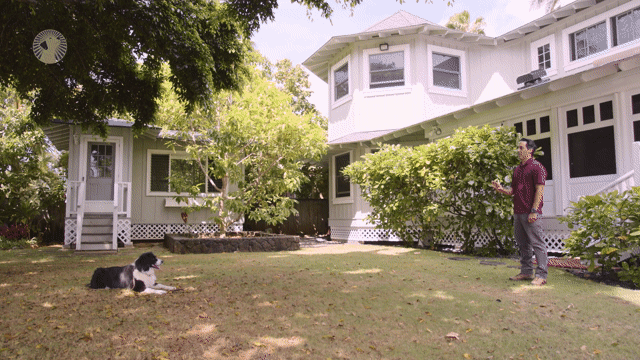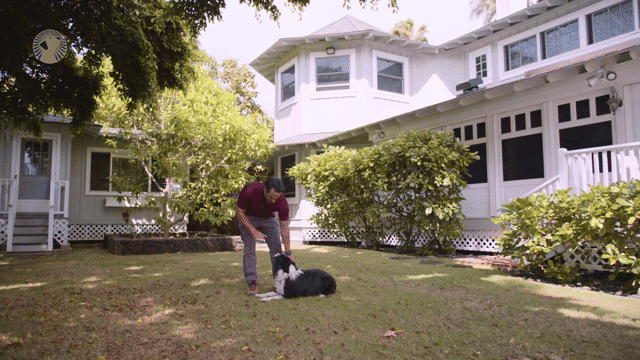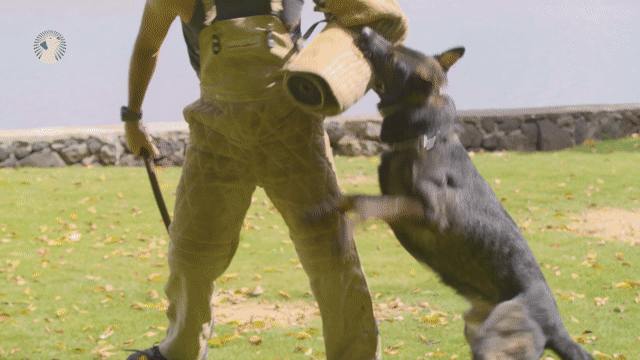The Ultimate Guide to Distance Obedience Training for Your Dog
What’s the best way to train your dog? It depends on what you want them to learn. There are many different techniques, but distance obedience training is one of the most effective. This type of training teaches your pup that following commands at a distance is just as rewarding as coming when called for food or other rewards.
If you teach your doggy that he should come back if he's reached a certain point, he'll know that obeying commands from anywhere is good behavior and will be more likely to obey whenever you call him.
What is Distance Obedience Training?
Distance obedience training is a technique that relies on teaching your pup to obey commands from a distance. This can be a very effective way to train your dog, as it helps to establish that following commands at a distance is rewarding.
When you're starting out, it may be helpful to use a more exaggerated physical cue to encourage your dog to go into the 'down' position. This prompt can fade later on, but it's important to make sure that the dog understands what you're asking.
Once your dog has mastered the basic commands at a distance, you can start working on more difficult tasks like having them sit or stay in place until released.
How to Train Your Dog Using Distance Obedience
First of all, you'll need to train your dog to respond to your voice commands at a distance. This can be accomplished by using treats or toys, gradually increasing the distance between you and your pup while only rewarding obedience when they are far away. It may also be helpful if you use an exaggerated physical cue like bending over or reaching out with your hand until your pup is reliably obedient at a distance before you stop using it.
Next, start working on more difficult tasks like having them sit or stay in one spot until released. You can gradually increase the difficulty of these tasks with time and practice but resist the urge to continue trying new things if your pup seems confused or frustrated.
Benefits of this Form of Training
The benefits of distance obedience training are safety and control over your pet in potentially hazardous situations. For example, if your dog is off-leash and runs towards a busy street, you will be able to call him back to you before any danger occurs.
In addition, this type of training can help you establish better control over your pet in public places. For instance, if your dog is constantly getting up from his 'stay' position at the park, people may become irritated. However, proper distance obedience training will make your pup more likely to obey your commands even in a busy environment.
So, is distance obedience training the right choice for you and your furry friend? It certainly can be! With a little patience and practice, you'll be able to teach your dog to follow commands from anywhere, increasing his safety and the amount of control you have over him in public places.
Tips for Successful Training
Distance obedience training can be a very effective technique for training your doggy. If you follow these guidelines, you should see the benefits of this type of dog training and your dog’s increased safety and control in public places.
- It is important to teach your pup to obey commands from a distance first before moving on to more difficult tasks like having them stay or sit down.
- You may also want to use an exaggerated physical cue like bending over or reaching out with your hand until they're reliably obedient at a distance before stopping.
- Next, start working on more difficult tasks like having them stay or sit down and release themselves when told. Start with easier challenges and work up if the pup seems confused or frustrated.
Last but not least, always remember the importance of safety! Make sure your pup is always under close supervision when practicing or performing any commands in a new environment. With time and patience, you can help your pup overcome any obstacle in his path, including distance obedience training!
Common Mistakes in this Process and Solutions
Some of the most common mistakes people make while training their dog to obey at a distance include:
- Not starting out with basic commands first - There is no running without first learning to walk. Make sure your pup knows the basic commands before moving on to more difficult tasks.
- Relying too much on treats or toys - While treats and toys can be helpful motivators, make sure you also use your voice commands to get your dog to obey from a distance.
- Not being consistent - Make sure you are practicing regularly and consistently so your pup will be able to obey you from a distance.
- You are moving around too much - Stay in one place until your pup obeys your commands before continuing.
- Expecting the pup to obey at a distance without any physical prompt - Dogs rely on their senses to understand what is expected of them. Be sure the dog understands a new visual cue to prompt what to do next.
- Giving up too soon on difficult tasks and starting new ones instead - If your pup is struggling with a task, take a step back and practice that particular command at a shorter distance until they're successful. Do not move on to new challenges until your dog has mastered the old ones.
These tips should help you train your dog effectively using distance obedience commands. Remember to be patient, consistent, and safe while practicing.
FAQs about Distance Obedience Training
How does distance obedience training work?
This form of dog training works because it applies the principle of voice or physical command to make your pup obey from anywhere. After first teaching basic commands, you should move on to more difficult tasks like having them stay or sit down and release themselves when told.
Should I use treats or toys for distance obedience training?
It is important not to rely too heavily on either treats or toys when commanding your pup at a distance. While they can be helpful, try to use your voice and physical commands as much as possible.
How do I avoid moving around too much while practicing distance obedience training?
When practicing this type of dog training at first, it is best to stay in one place until your pup obeys your commands before continuing. This will help them become accustomed to their expectations and avoid getting confused or frustrated.
What if my pup doesn't obey my commands at a distance?
If your pup is struggling with a task, take a step back and practice that particular command at a shorter distance until they're successful. Do not move on to new challenges until your dog has mastered the old ones. With patience and practice, your pup will be able to obey you from anywhere!
How do I train my dog to stay away from a distance?
One of the more difficult commands to master, teaching your pup to stay away at a distance, can be done with patience and practice. Start by having them stay in one place while moving a short distance away. If they break the stay, gently correct them and have them try again. Continue doing this until they can stay put even when you are further away.
Can I use distance obedience commands to stop my dog from barking?
Distance obedience commands can effectively stop your dog from barking, but it is important to first identify the source of their behavior. If your pup is barking for attention, using a stay command should help curb the behavior. If they are barking to express excitement or fear, physical commands and your voice should be enough to teach them not to bark.
How fast should I expect my dog to move during practice?
As a general rule of thumb, you can expect your pup to reach full mobility within 2 weeks of practicing their distance obedience training. Remember that this type of dog training is dependent on your pup's individualized learning and their ability to understand the new visual cues that prompt action.
Do all dogs learn distance commands the same?
It is important to note that dogs do not all learn at the same pace. If your dog seems particularly slow to comprehend, try using different visual prompts such as hand signals or voice cues in addition to the physical command.
How do I make my dog come far away?
If your pup struggles to come at a distance, it may be time to train them using an entirely new command. Try teaching them how to lie down and stay using the physical command combined with voice cues. Then try practicing "come" with treats or toys as a reward until they can do it without any other prompts.
What are the three D's of dog training?
The three D's are a well-known obedience training system that helps teach dogs to come, stay and drop. The key components of this system are:
- Distance
- Distraction
- Duration
Using all three of these factors in your training routine can help your pup learn new commands quickly and effectively. When it comes to distance obedience training, practice makes perfect! With patience and a little bit of hard work, you and your pup can be successfully commanding each other from anywhere.
What kind of equipment do I need for distance obedience training?
There is no special equipment required for distance obedience training. However, a good quality retractable leash can be helpful in allowing you to give your pup more room to move around during practice. Make sure to always use a leash that is appropriate for your dog's size and strength.
The Beacon Dog Training Course Can Help
Take your pup to the next level in their training with the Beacon Dog Training Course. This course will teach you how to train your dog at a distance, which is an important skill for any pet owner who wants to be able to control them without being near them all of the time.
You'll need some patience and practice when it comes to teaching commands from afar, but this article has provided several ways that you can put these principles into action, so don't give up! If you have more questions about our program or are interested in enrolling your pup, feel free to sign up today. We're excited to help get you started on achieving success with distance obedience training for both you and your canine companion.
Useful Ressources

Perfecting the Recall
What is dog recall training? The recall is one of the most critical behaviors you can teach your dog. Learn how to perfect this behavior with your dog.

Practicing a Solid Stay
What is a reliable stay? Learn how to teach a dog the reliable stay command. Find out why time and distance are stressors, and how it is a life-saving skill.

Problem-Solving Theories
Learn how to correct dog behavior problems (including food possessiveness and aggression) in order to make your life with a dog so much easier.

Sport and Personal Protection Dogs
Dog training is not always easy, however, Daniel's methods are amazing and he makes it seem simple. The techniques work wonders on both you and your dog! What high level precision training looks like in certain breeds made for Sport and Protection training.

The Basics of Dog Psychology
You love your dog, but do you really know what your pup is trying to tell you? Most people don't. Dogs have a complex language of their own, and if we want to learn how to communicate with them on a deep level, we need to understand this language better.

How Dogs Use Their Senses in Training
Learn ways to train your dog through sense-training exercises that will allow your pup to learn new commands while also stimulating their natural instincts.

Popular Dog Training Methods
There are many dog training methods, each technique having valuable use in different scenarios. So, how do you choose the right training program for your dog?

How to Get Your Dog to Focus on You
Many people have difficulties with their dogs not paying attention to them and getting distracted by other things. This can be a complicated problem, but there are some ways that you can work on it!